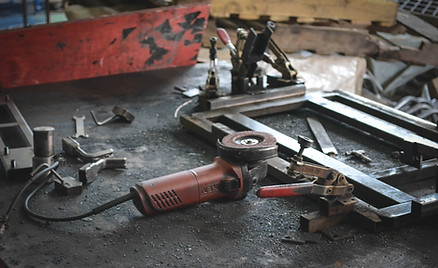PROJECTS
Just a few examples of some past projects . . . at least the ones I'm allowed to talk about

Past Project: bike wings
This was for a retiree that wanted to use some wings to propel a bike when he had a tail wind on a long ride up the California coast. This included concept development for realistic use, assembly, and storage. The deliverable for this was a detailed Bill of Materials, complete drawings for fabrication, and a CAD model for design reviews and concept communication. The challenge here was coming up with a design that can quickly and easily be stored when you have a head wind and not be in the way. During discussions with the client we identified a need for the system to be quickly installed/removed so the bike can be used for normal rides. This was a fun project to help the client pursue their passion.

Past Project: mixer, for R&D of thermite compositions
This project was to deign a mixer design for remote (unattended) mixing of thermites to support a government funded research contract. The concept was to get a homogeneous mix of additives with even particle distribution while maintaining a simple design and functionality. It needed to be robust enough to operate outdoors at distances associated to safe operating distances for the amount and type of energetic materials being mixed. Through put needs were critical in establishing the container size and mixing rates. The design could not have mixing blades, violent shaking, or generate electrostatic charge due to the materials unknown ignition sensitivity (as this was one of the reasons for the mixing of various batches of materials in varying ingredients). We stayed with a very simple design.

Past Project: Remote explosive desensitizing
This was a fun project that required remote operation to pump water into plastic containers that contained explosive materials that had once been wet, but with age, the seals broke and the water evaporated. These contained high explosives and cannot be handled unless they are wet. This device was place near the containers and then personnel went to a remote location where the operation was observed with a camera. The quantity of the water (flow rate and volume control) was critical. We also had to vent the bottles for air to escape so we didn't build pressure in the plastic containers when the water was added.
We calculated and tested the force necessary to puncture the bottles. We also needed needles that would not deflect and assure the bottle was punctured and not just deflecting. Using a remote camera allowed us to verify the needle punctured the bottles, the water level was appropriate (we also had volumetric pump rates calculated to assure the energetic materials were sufficiently wet), and the bottles did not crack. For critical processes such as this, we also had containment in place should a bottle fracture due to the age so we could minimize personnel exposure to hazardous materials. The job was a great success and was completed ahead of schedule due to excellent communication between all the parties. We prepared for the worst case scenarios and made every effort to assure we didn't have them.

Past Project: Remote Test Chamber
This project was for a defense article test. The test required us to control the temperature of the test article inside of the oven as we increased the temperature from ambient air temperature to the ignition temperature of the energetic materials in the article. This was a 72 hour test so the chamber needed to compensate for variation in outside temperatures. The test article contained large amount of energetic materials so it had to be conducted remotely. This requires an understanding of DOD 4145 for QD calculations and siting of the test location. It also required temperature and time tracking to verify the ignition temperature and that the ramp-rate met the test criteria. One of the major difficulties with this test was the oven itself could not create fragments if the article detonated during the test. So an off-the-self over would not work. Critical parameters for this test included:
-
shape of the oven to allow even heating of the article
-
securing the article during ignition (chained)
-
no metal or hard materials for safety
-
insulate well enough to maintain heat during the cold desert night, but not sealed to create detonation at ignition (must be vented)
-
temperature control; ramp-rate, temperature tolerance, airflow, ramp to 350C
-
remote operation
